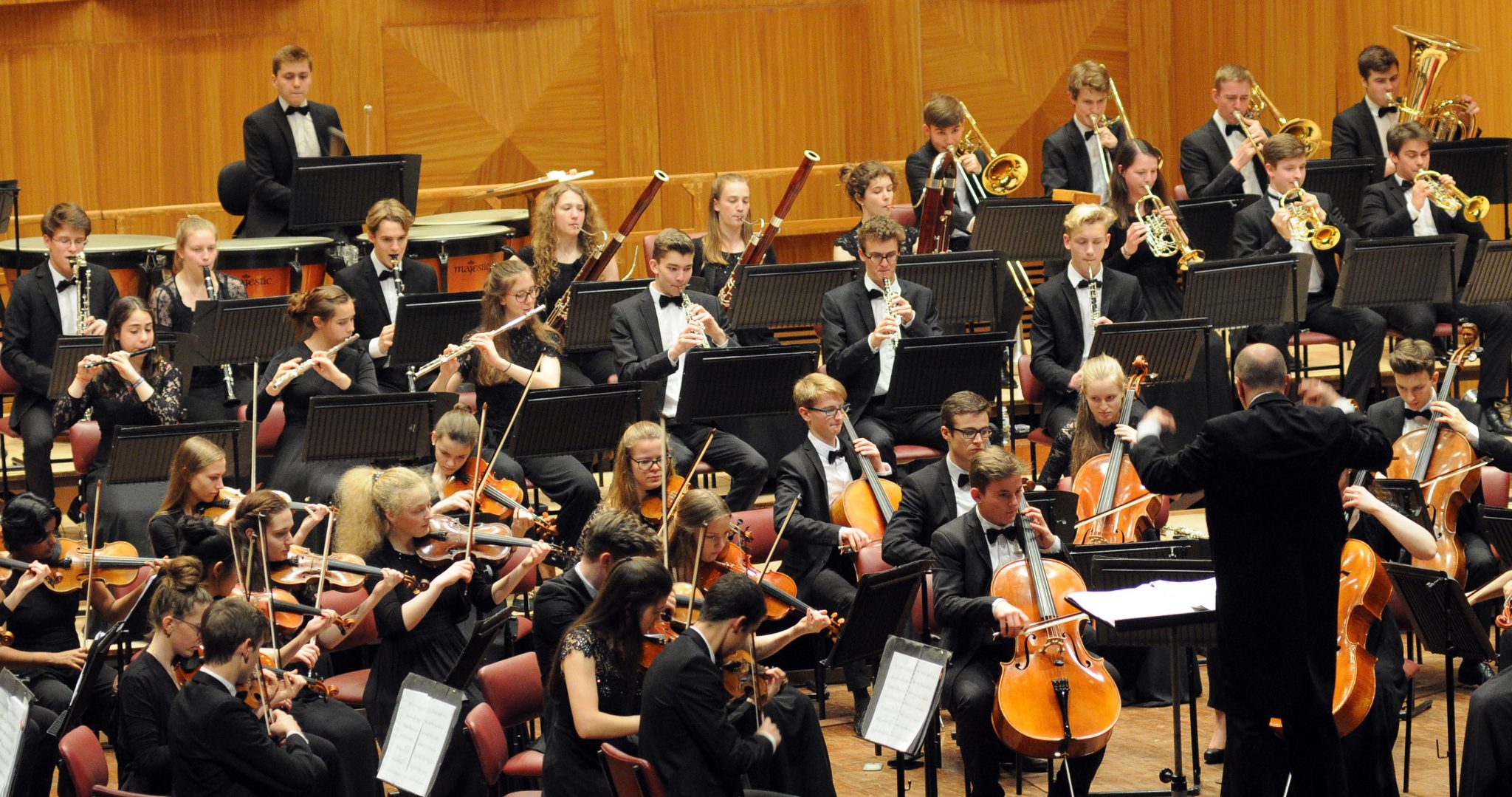IT’S RAINING ORCHESTRAS

Running up to the Spring 2018 Season of the Symphony Orchestra of India, the National Centre for the Performing Arts had no less than five orchestral concerts in the months of January and February 2018.
On 14th January was the Martinů Czech Philharmonic Orchestra. The next Sunday was the Bombay Chamber Orchestra; then on the 18th and 19th at the Jamshed Bhabha theatre, there were two programmes by the National Youth Orchestra of Germany. Finally on 1st February, the Stuttgart Chamber Orchestra made a memorable appearance as part of the jubilee celebration of twin city partnership between Stuttgart and Mumbai. I will describe my reaction to the German Orchestras in this review.
The word that keeps coming to my mind when I think about both the German Orchestras is precision. The degree of accuracy in ensemble, dynamics and nuances, especially with the large symphony orchestra of German youth was nothing less than incredible. The two programmes in the successive evenings were well selected to show off the wide range of capabilities of the whole orchestra; as well as the sum of its parts.




Opening the first concert was Geysir a tone poem for orchestra by Jon Leifs (1899 to 1968). This piece starts off very quietly and works its way up to a crescendo portraying the tremendous power of subterranean heat and pressure of Iceland’s austere beauty of landscape. This piece is not easy to listen to, being very modernist and atonal. Following this was a work by Tchaikovsky, which was also unfamiliar to me, the symphonic poem, The Storm. This is an early student work; though published posthumously. It depicts the tragedy of Katerina, a young unhappily married woman who has an illicit lover affair, confesses her infidelity to her husband during a thunderstorm and later drowns herself in the Volga.
After the intermission, we were into more familiar territory with Schumann’s third symphony “The Rhenish”. This along with Schumann’s first symphony, the Spring is a uniformly happy work. It was written in a comparatively happy and peaceful time following a trip to the Rhineland in 1850. In this work in E flat major, there is much that recalls the great symphonist and Schumann’s compatriot, Beethoven. The symphony’s opening theme recalls the opening movement of Beethoven’s Eroica symphony in the same key and the second movement depicts the flowing Rhine; thus evoking the second movement of the Pastoral symphony.
This second movement is a combination of minuet and trio and theme and variations. The symphony came to an end with a jubilant finale with brass and timpani to the fore.
With the first programme’s challenges over, the orchestra could relax to spotlight various orchestral sections that make the sum of its parts. Aaron Copland’s Fanfare for the Common Man is a short piece scored for brass and percussion (timpani tam-tam and bass drum) written in 1942; inspired by Henry Wallace, the US vice president’s encouraging tribute to those engaged in World War ll. The young brass players were up to the demands of the score that blends complexity with popular style.
Next it was the turn of the woodwind with Dvořák Serenade for Winds, Cello and Double Bass in D minor, op.44. This work by the young composer resembles the light and classical serenade of Mozart. With outstanding soloists from the young orchestra, it was a rare opportunity to hear (in Brahms’ words) “a lovely refreshing impression of real rich and charming creative talent”.
The second half spot lighted soloists in excerpts from concertos by Mozart, Dvořák and Ignaz Moscheles. It was not possible to find fault in their technical mastery and musicality; they were all lightness and grace as befits their youth.
A word about the orchestra – It is Germany’s youngest major orchestra founded by the German Music Council in 1969 and made up of the country’s finest young musicians between the ages fourteen and nineteen. In addition to Sir Simon Rattle, distinguished conductors such as Herbert von Karajan, Kurt Masur, Gustavo Dudamel, and Kirill Petrenko have led the orchestra. They have performed around the world, often as a cultural ambassador. Hermann Baumer once a musician in the Berlin Philharmonic conducted these youngsters with a perfect blend of sympathy and control. These two evenings left us wanting for more!
In contrast to these two evenings, we had a more mature and much smaller group of twenty or so musicians of the Stuttgart Chamber Orchestra, founded by Karl Munchinger in 1945. In the first half, the orchestra was joined by Nikolaus von Bulow on cello; in Haydn’s cello concerto no. 1 in C major, Hob. Vllb: 1. This joyful work was fittingly celebratory for the orchestra’s fifth visit to Mumbai. After the interval, the engaging and balletic Serenade for strings by Tchaikovsky was played with luminous tone and attention to detail; secrets best kept by the chosen few. In this work, they were joined unobstrusively and harmoniously by nine members of the Symphony Orchestra of India which is in its Spring season at the Jamshed Bhabha theatre.









